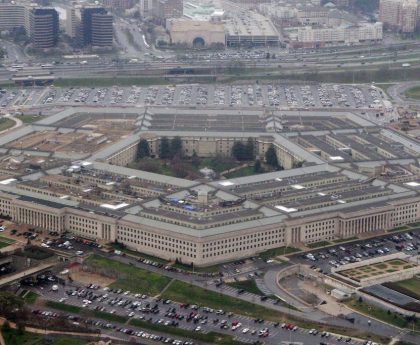#inform-video-player-1 .inform-embed { margin-top: 10px; margin-bottom: 20px; }
#inform-video-player-2 .inform-embed { margin-top: 10px; margin-bottom: 20px; }
There are upsides to not putting large solar arrays on farmland.
One emerging land use brought to light recently is the location of utility-scale solar operations on abandoned or reclaimed strip mines — land that cannot be used for soil-rich farming operations.
Pennsylvania Lt. Gov. Austin Davis, state environmental officials and solar company representatives earlier this month visited a 93,000-panel solar operation near Midland in Beaver County, occupying 300 acres on a hillside that had been an unreclaimed abandoned mine.
Government officials are now looking at this prospect as a way to avoid putting the systems on prime farmland.
The state Department of Environmental Protection (DEP) has released a report, “Assessment of Solar Development on Previously Impacted Mine Lands in Pennsylvania,” which identified nearly 169,000 acres of abandoned mine lands across the commonwealth that could potentially support solar facilities. That includes 27,000 reclaimed and 142,000 unreclaimed acres.
“Pennsylvania has tremendous potential for solar energy on abandoned mine lands. Our report shows that putting solar panels on just a small fraction of the suitable abandoned mine lands could produce enough electricity to power Pittsburgh,” Jessica Shirley, acting DEP secretary, said during that visit. “We can clean up these sites, put them back into use with solar energy, and create jobs all at the same time.”
Clifford Wallace, a North Beaver Township farmer and president of the Beaver-Lawrence Farm Bureau, had advocated for the use of farm acreage as prime farmland production.
“I hope we see more of that in the future,” he said. “There are a tremendous amount of those acres in western Pennsylvania.”
Clifford Wallace
Lawrence County chief assessor J.R. Hardester pointed out that farmers enrolled in the Clean and Green program under the Farmland Preservation Act who lease their land for solar can be financially penalized for putting solar on their farmlands.
“There would be a reduction for a use tax, and that would be a violation of the Clean and Green,” he said. The farmer would pay the difference between market value taxes compared to Clean and Green taxes, with 6 percent interest added, for up to a maximum of 7 years, he said.
Hardester noted that Lawrence County has more than 2,000 farms in the Clean and Green Program.
One thing a property owner should consider when leasing for solar is that a solar array is considered an improvement on the property, and it is likely to be taxed higher because of it, through an increase in the assessment, Hardester said.
“We would do an evaluation on the land lease. We will determine what the solar company is paying per acre for the land to the property owner. If, for example, it’s $1,000 per acre per year, the county office would multiply that by the number of acres leased, for gross income. Then it would subtract expenses incurred by property owners to give a net operating income,” Hardester said. That figure would be divided by the capitalization rate for the value of the property, which would be the market value of today. That would be multiplied by the common level ratio.
“It’s a very common appraisal practice,” Hardester said, noting that it’s usually included in the lease between the property owner and the company as to which party would be responsible for the extra taxes. However the assessment office would bill the property owner.
#inform-video-player-3 .inform-embed { margin-top: 10px; margin-bottom: 20px; }
This post was originally published on 3rd party site mentioned in the title of this site





